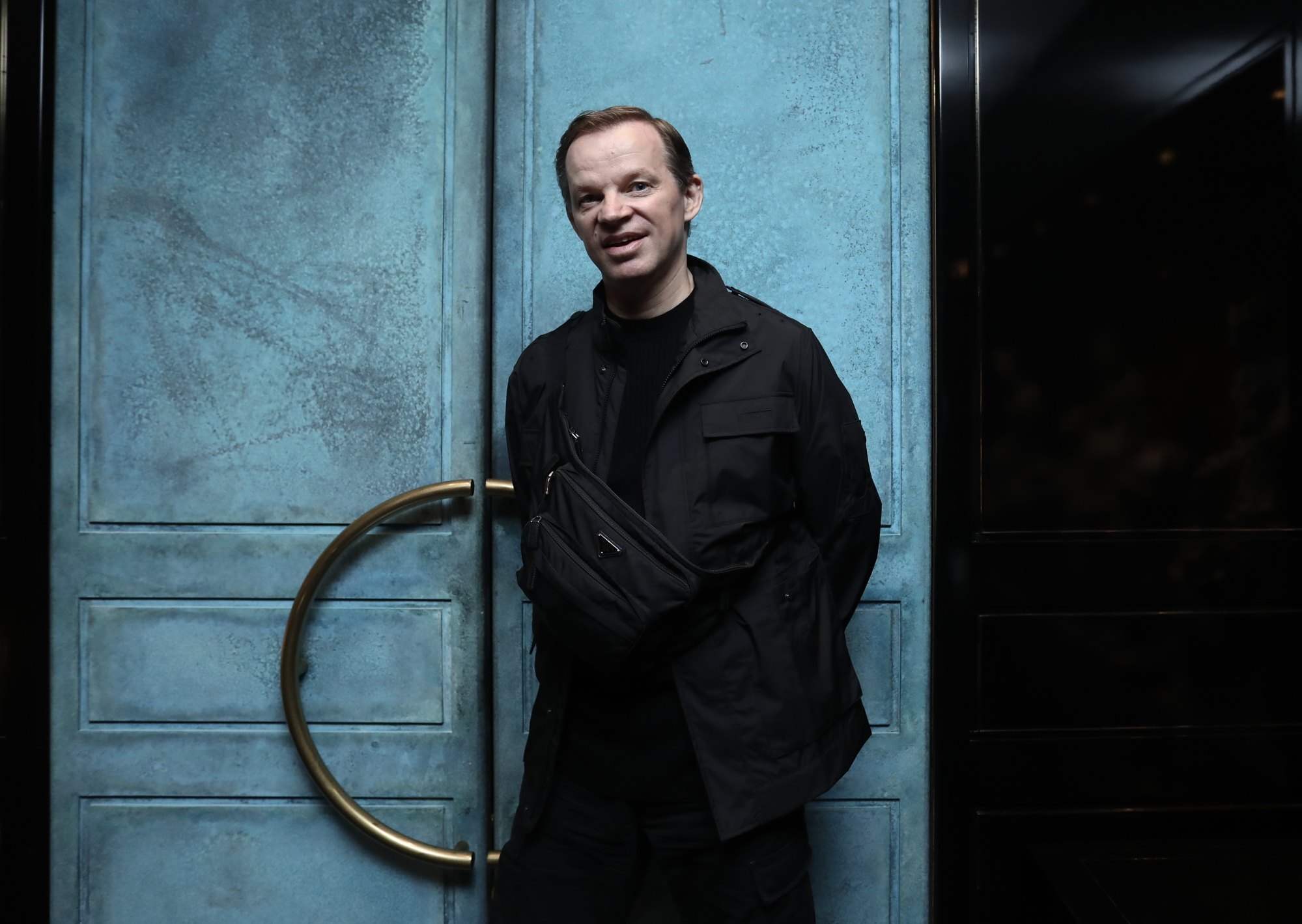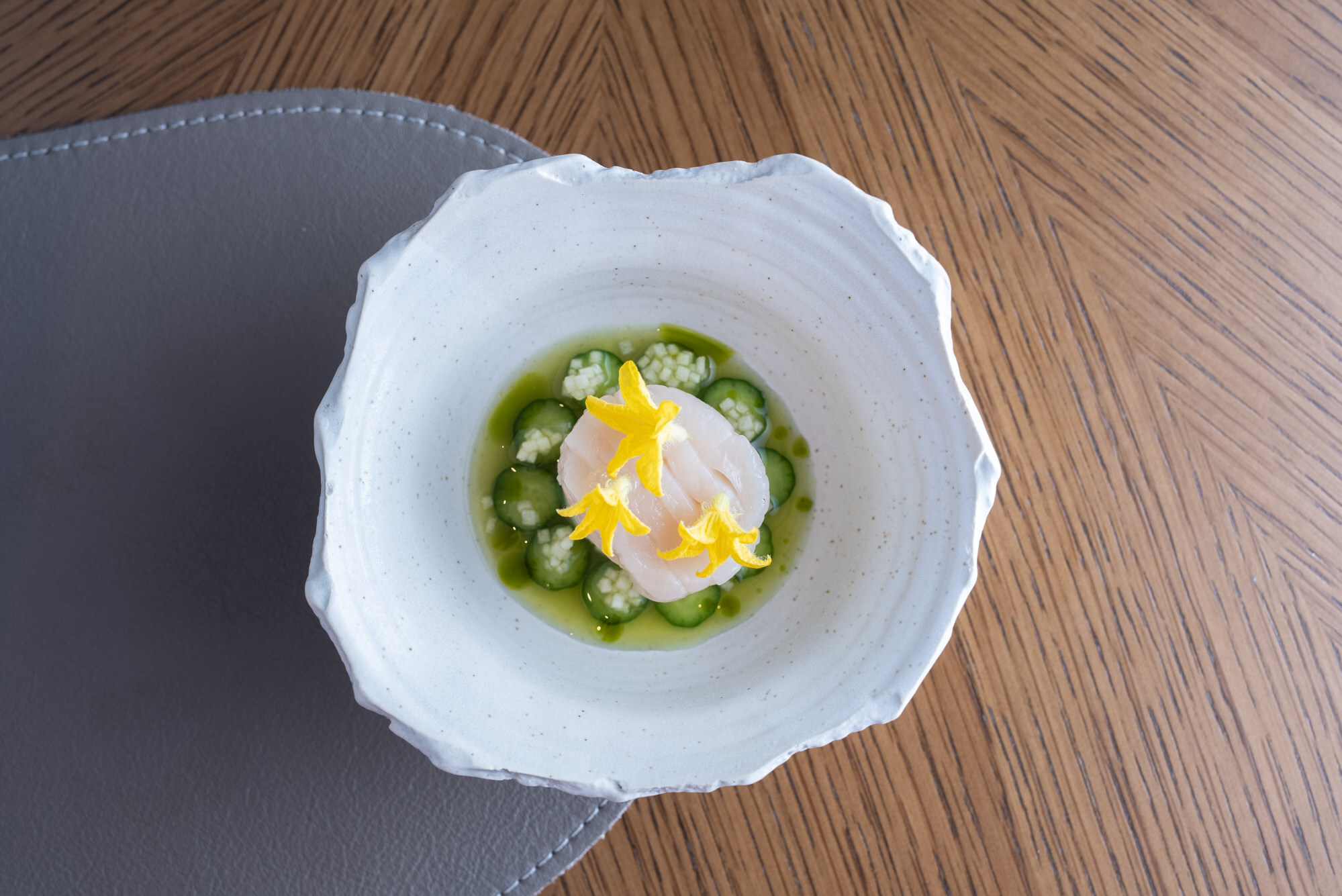
Profile | Michelin-star chef’s war on waste and sustainable eating push, and how he gets staff and Hong Kong diners to embrace change
- Landmark Mandarin Oriental Hong Kong culinary director Richard Ekkebus tells Bernice Chan how he gets staff and diners to buy into its sustainable eating agenda
- From teaching chefs to reduce waste and make ‘humbler ingredients delicious’ to changing customer tastes at Amber restaurant, it takes constant education
How do we make more people aware?
“We want to change the mindset of the staff and hope they will bring some of these positive changes to their personal lives. I also speak multiple times a year at hotel schools about anything sustainable.”

How did you cut down on plastic use at the Landmark Mandarin Oriental?
“The straws are natural, no plastic or paper coasters, everything is home recyclable, which means if it ends up in the landfill, it will break down in a matter of months.
“Three years ago, we started to work with a company that produces cling film from corn. In the beginning, it was US$80 per roll, so we cut down our consumption of it by three-quarters, with simple solutions like using stainless-steel containers and lids. Then, it was three years of going back and forth – the cling film was not strong enough, not elastic enough and didn’t stick onto the container.
“We worked with another company in the UK on vacuum bags. We needed the right thickness, it had to be temperature resistant, so that we could do sous vide cooking. Now, we have had the solution for more than 1½ years. The prices of these products are extremely high, but because we’ve reduced the amount of cling film and vacuum bags we are using, we’re not spending more money than before.”
You are president of Food Made Good. What does it do?
“If you want to be more sustainable, it’s very daunting if you don’t know where to start because the technology is confusing, and some companies are not sincere and give a lot of wrong information. Food Made Good helps you with guidelines.
“If you want cage-free eggs, there is a multiple-page document in Chinese or English of suppliers and it gives you policies you can adapt to your restaurant or hotel. When we finalised the deal on cling film, I shared all the details on that platform so other people can use it.
“As president, I want to get more Chinese-speaking restaurants and chefs involved, more independent restaurants and big groups, and grow from 70 to 200 members.”

How do you make fine dining sustainable but also indulgent?
“For me, the challenge is to make humbler ingredients delicious and indulgent. If you eat an industrial-grown turnip, compared with an organic one grown very slowly, you can taste the difference. First of all, the nutritional value of an organic turnip is way higher, but it also has a higher texture and better density.
“The only problem we have right now is we need to change Hong Kong’s desire for very tender meat. Organic, free-roaming, antibiotic-free, growth-hormone-free meat has more of a bite to it because it’s denser, not tougher. Through correctly maturing it, dry-ageing it, cooking it at the right temperature and to the right doneness, we can overcome it.”
Who doesn’t want to eat something that is more healthy, that is grown wholesome and not sitting in a refrigerator for two weeks before it gets to your plate?
What about sustainable seafood?
With net-caught fish, tonnes of fish are mushed together and they get bruised and battered, so the quality of line-caught fish is significantly higher.
“We also use a lot of filter feeders: oysters, mussels and clams. When you farm filter feeders, there’s no negative impact on the environment, they actually reinforce the quality of the water and the biodiversity around the area where they are farmed, and they feed themselves. We work with a local lobster farm here growing spiny lobsters, and giant pomfret fish that is farmed in Lantau.”

What should the government do about seafood consumption?
“I’m also involved with the Hong Kong Sustainable Seafood Coalition because the problem with Hong Kong is that it is the wild west of seafood – there is no legislation regulating it.
“If you go to any fish supplier, you should ask for the Latin name because, for example, with toothfish there are many types of fish that are similar, but if you do not have the Latin name, you are not sure of what you are getting. Are you buying a species that is under pressure? Whereas for chicken, you need to know what it was fed, where it was raised, where it was slaughtered.
“I’m not advocating that we stop eating seafood, but we need to know where it came from, how it was fished and, for the consumer, that’s hard to know.”
This isn’t what you learned when you started cooking, right?
“No, not at all, but I think it has to do with a lot of common sense. At the age of 55, I want to make a real difference in helping shape a better restaurant trade. Thirty per cent of carbon emissions are related to our food system, so we have to make a change. Thirty per cent of all the food produced in the world goes to waste, so we have to have better systems, better distribution – it needs to be more local.
“Look at the amount of rooftops we have in Hong Kong that could be urban farms. Who doesn’t want to eat something that is more healthy, that is grown wholesome and not sitting in a refrigerator for two weeks before it gets to your plate?

“When I came to the Landmark Mandarin Oriental it took me years to change people’s wasteful habits. People used cling film to wrap something 10 times around. I said nine of the times you went around was nine times extra work, but is it better protected? It’s just a habit, but a bad habit.
“And there was no understanding of what it costs to make the cling film, what it costs the environment. It’s a lot of reminding, reinforcement and training, but if we can make that change, then it’s worthwhile.”











